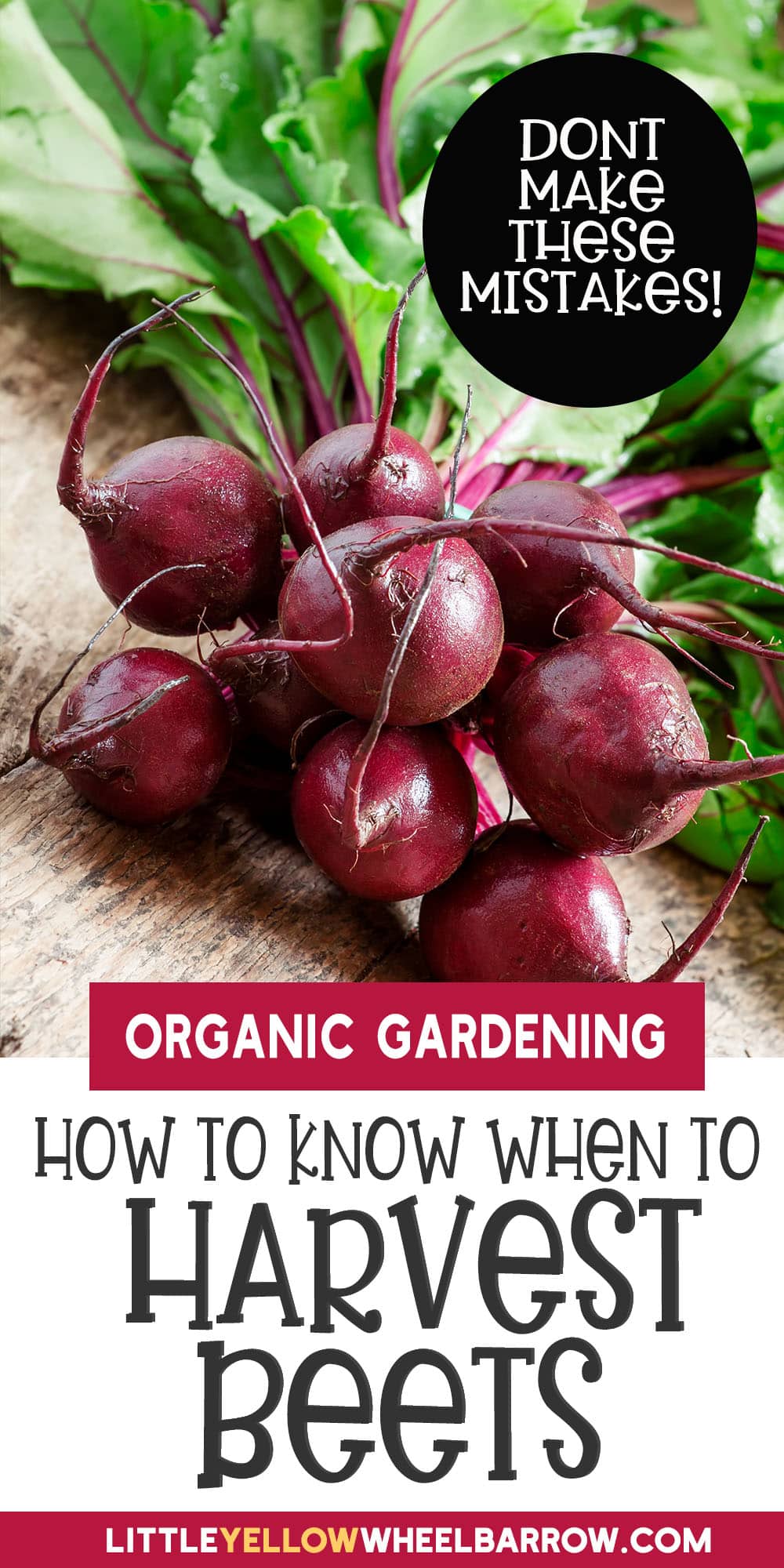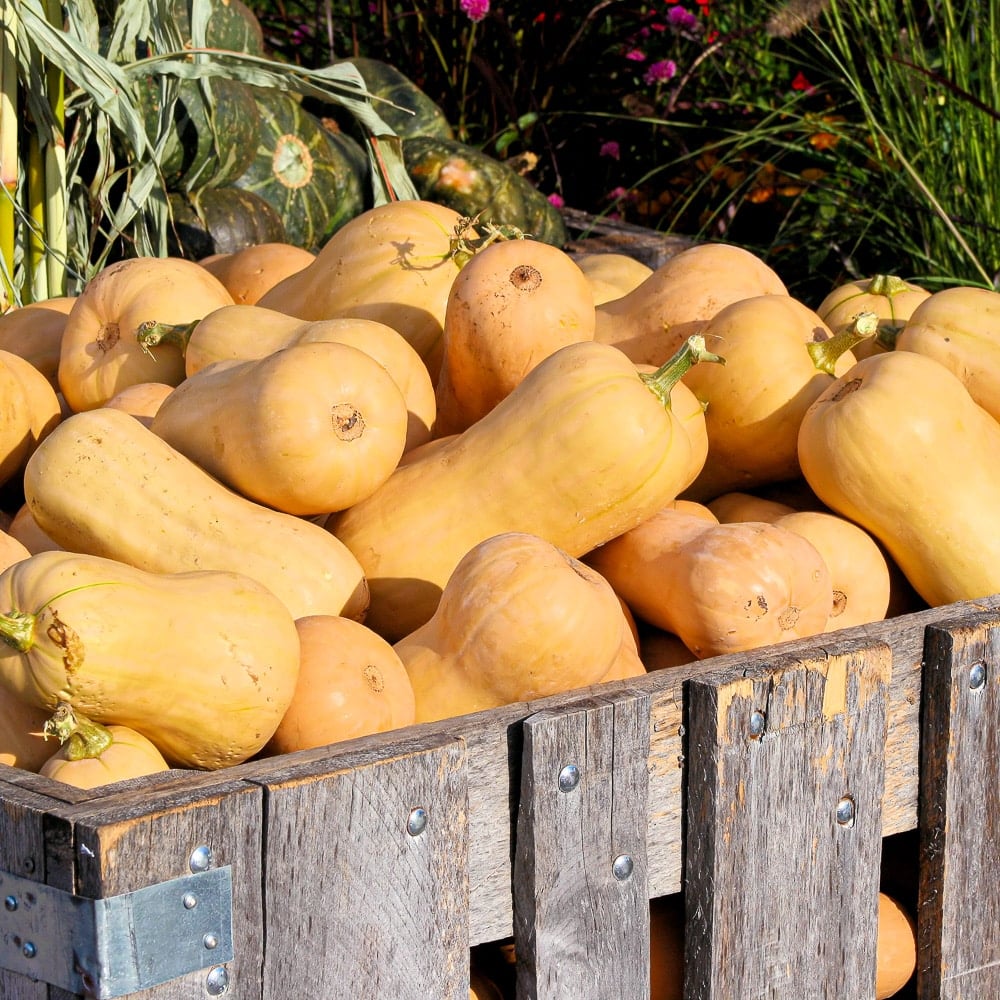When To Harvest Beets: How to Tell Your Beet Crop is Ready
If you’re a new gardener you may be wondering how to know when to harvest beets for maximum yield and flavor. Determining when your beets are ready for harvesting can be tricky, but this article will provide helpful tips on how to do it based on their size, color, and foliage, as well as harvesting tips to ensure you don’t damage your crop. Read on for my tips to tell when to harvest beets so they are the freshest and best tasting you ever have.

Full disclosure; I never liked beets. There, I said it. I once had beet juice that made me so sick that I was put off beets for two decades! But then someone offered me some pickled beets at a dinner, and never wanting to be a bad guest, I ate them – and WOW. I could not get enough! Now I grow beets just for pickling, and I pickle a LOT of jars of beets every year. They’re perfect for salads, sandwiches, or just plain on a home-grown charcuterie board.
Signs of Ready-to-Harvest Beets
Any seed packet you buy should include an expected maturation time, with most beet varieties ready in 50-70 days. This information is important for timing of planting and to give you a rough idea of when your crop will be ready, but it can’t be relied on as an exact predictor. Factors like growing conditions, local climate, soil nutrients and fertilizing schedule can all affect beet’s harvest time, so use these cues to determine when to harvest beets:
Visual Cues: Size and Color
Visual cues play a crucial role. Keep an eye on the size and color of the beets as they mature. Once the beetroots reach a diameter of about 1-3 inches, they are usually ready for harvesting. Vibrant colors on growing beets, like deep red, yellow, or purple, indicate that the beets have reached their peak ripeness.

Firm and Smooth Skin
Inspecting the beet’s skin is another way to determine its readiness for harvest. When beets are ready they will have firm and smooth skin. Gently press your finger against the skin; if it feels firm without any give, it indicates that the beet is ready to be pulled from the ground.
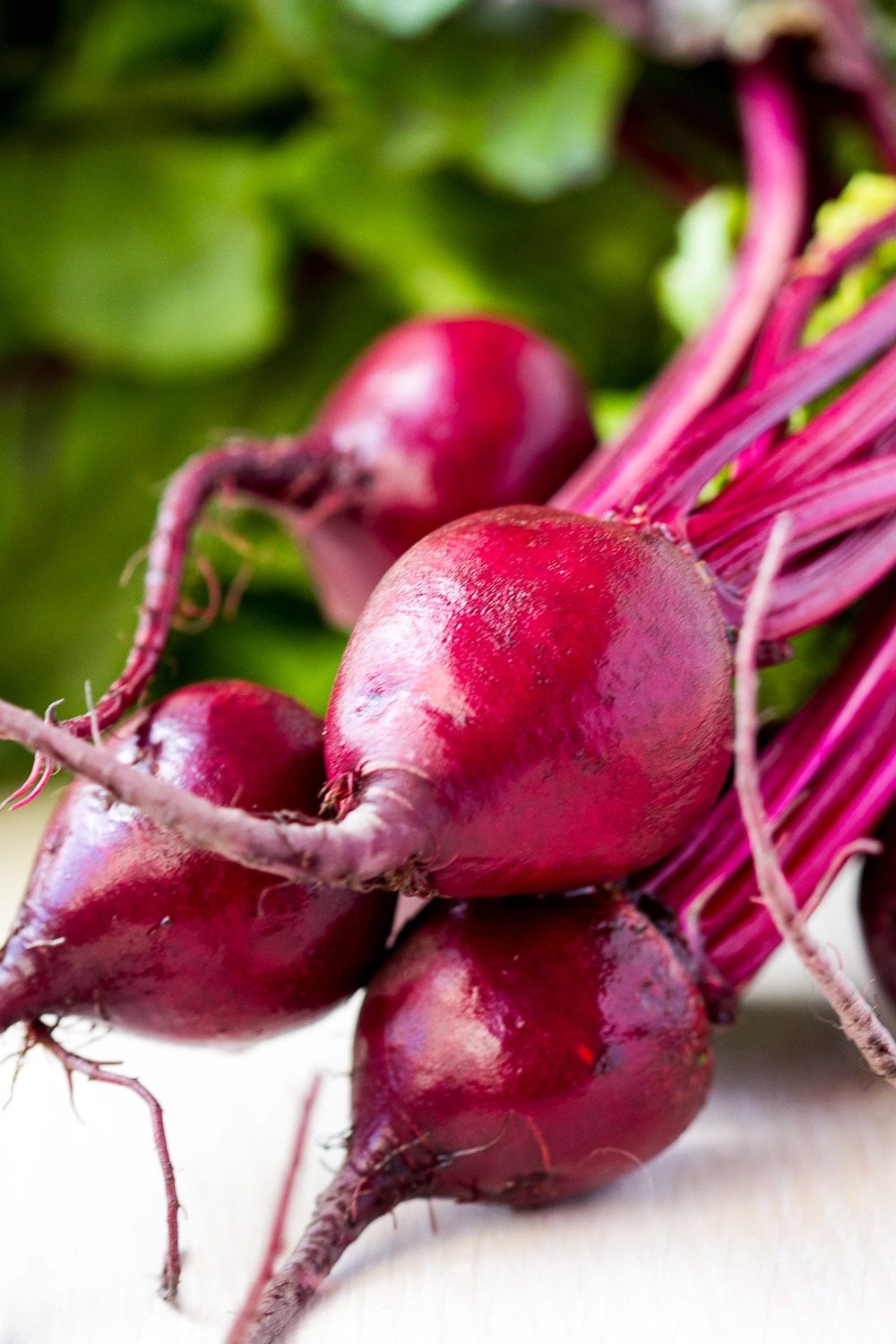
Foliage Growth and Root Development
Observing foliage growth and root development can also provide valuable insights into when to harvest your beets. The foliage should appear healthy with lush green leaves. As for root development, if you notice that the beet plants have well-developed roots extending deep into the soil, it’s a sign that they have reached maturity.
Remember that beets are a cool-weather crop, so consider harvesting them during fall or early spring when temperatures are cooler.
You can also harvest beet greens throughout the growing season – only take the outer leaves, but you can keep harvesting until the beets are ready for harvest.

Step-by-Step Guide to Harvesting Beets
Harvest beets between 1.5 and 3 inches in diameter for optimal taste. Check their size by gently brushing away the soil around their tops. To ensure a successful beet harvest, follow this simple step-by-step process:
Harvest at the Ideal Time of Day
Timing is everything. The best time of day to harvest beets is in the morning or late afternoon when temperatures are cooler. Harvesting in the morning helps to preserve beets and their sweetness and crispness. Avoid harvesting during the hottest part of the day, as this can cause the beets to become limp and lose some of their flavor.
Loosen the Soil around the Roots
Gently loosen any soil around the beet plant using a garden fork or trowel. This will help make it easier to pull out the beets without damaging them.
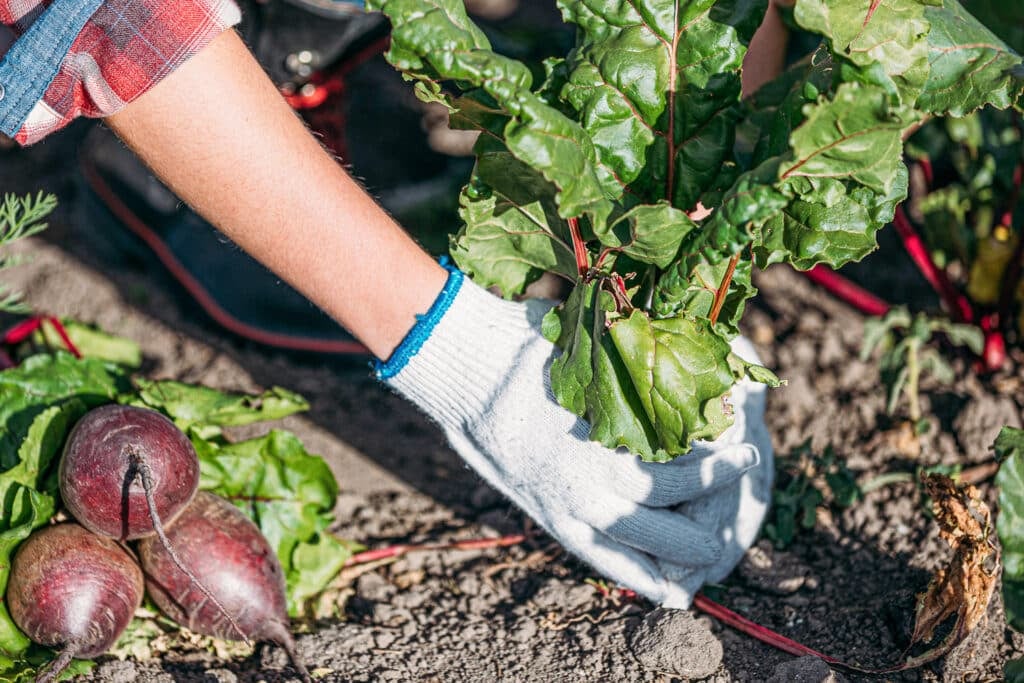
Pull Out the Beets
With a firm grip on the foliage near the base of the plant, gently pull out each beet. Avoid yanking or twisting too forcefully, as this may cause damage to both the roots and leaves.
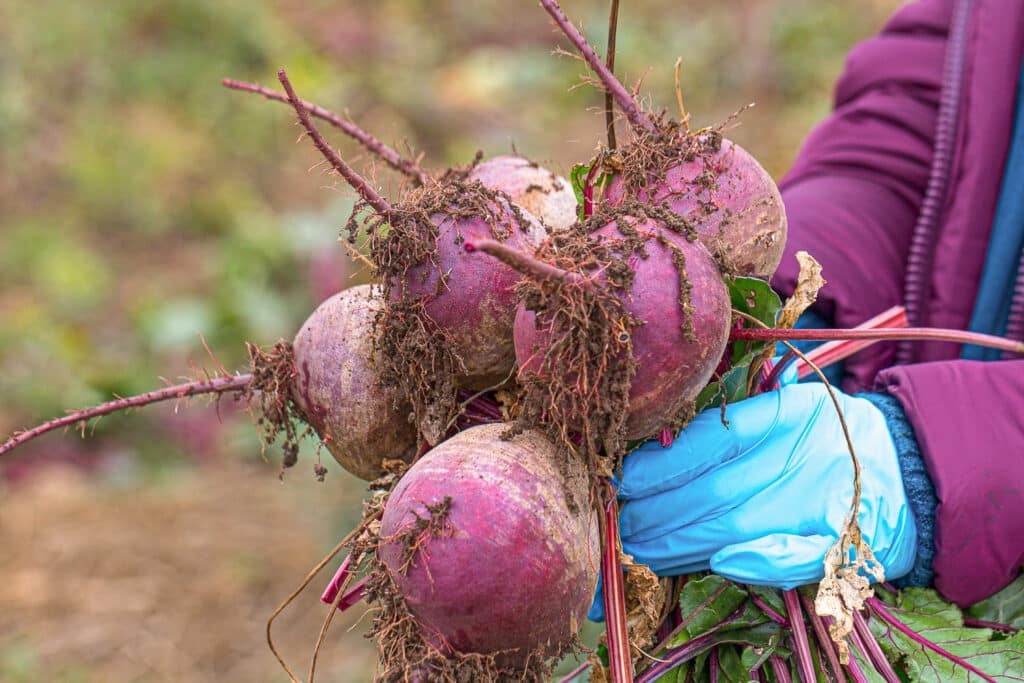
Remove Foliage
Once you’ve harvested all your beets, it’s time to remove the foliage. Hold onto each beet by its leaves and use a sharp, clean knife or scissors to trim any excess foliage. Leave about an inch of stem attached to each beet to prevent bleeding during storage.
Remove any damaged or discolored leaves from the bunch, then clean and place the cleaned and trimmed beet greens in a plastic bag or container lined with a damp paper towel. Seal the bag tightly and store it in the refrigerator. Beet greens are best consumed within a few days to retain freshness and flavor.

Storage
Place your freshly harvested beets in a cool and dark location, such as a root cellar or refrigerator crisper drawer, to store them. This will help maintain their freshness and flavor for an extended period. Alternately, pickle beets for improved shelf life and flavor (in my opinion).
For refrigeration, remove any greens, clean, trim, and store beets in a plastic bag with holes punched into it. Keep it in the crisper drawer of your fridge at 32°F (0°C) with high humidity.
For a root cellar, store your beets in wooden crates or boxes lined with straw or sand to prevent rotting. Keep the temperature stable between 32°F (0°C) and 40°F (4°C), with humidity levels ranging from 85% to 95%.
Expert Tips
- Avoid leaving the beets in the ground too long. If you wait too long to harvest your beets, the beets can become tough and woody, resulting in a less enjoyable eating experience.
- Don’t harvest the beets when they are too small. Be sure to give them enough time to grow to their full potential before picking them. Mature beets should be 1-3 inches in diameter, depending on the variety.
- Harvest in the Morning: Harvesting beets in the morning when temperatures are cooler can help preserve their quality. Beets tend to lose moisture as temperatures rise throughout the day, so harvesting early can help retain their freshness.
- Don’t forget the greens! Remember when harvesting your beets that beet greens are also edible and make a great addition to salads or sautés! Don’t let them go to waste; use them in your favorite recipes for an added burst of nutrition.
- Remove Excess Soil: After harvesting, gently brush off excess soil from the beets. Avoid washing them until you’re ready to use them, as excess moisture can promote rotting. Instead, store them in a cool, dry place with the tops removed.
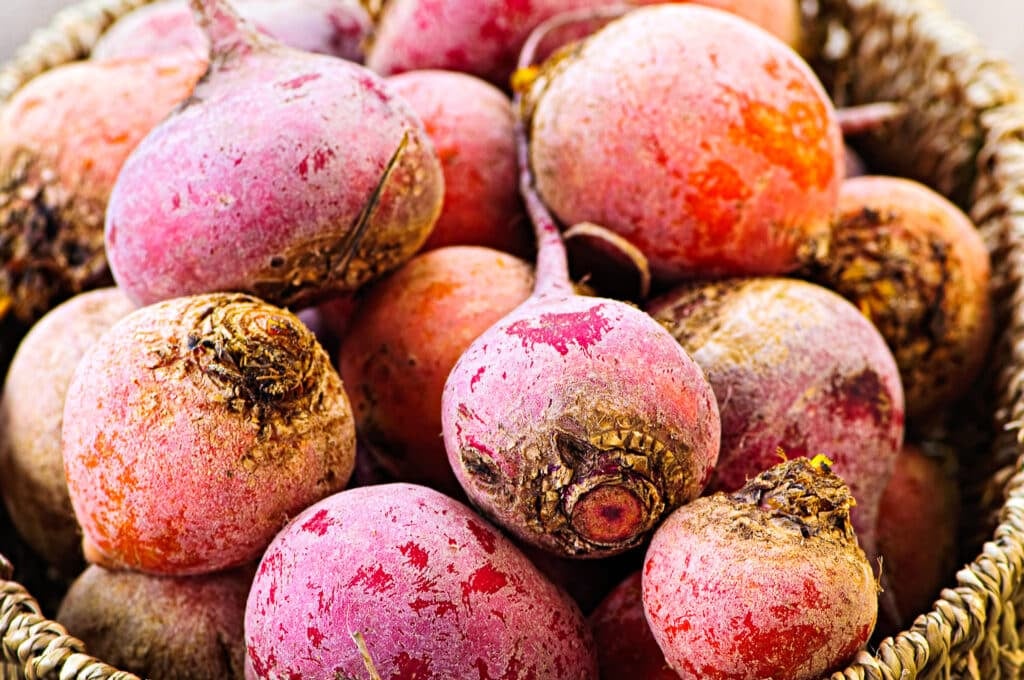
FAQs
Beets are typically ready to harvest around 50 to 70 days after planting, although this can vary depending on the variety and growing conditions.
Look for the diameter of the beet being around 1 to 3 inches, depending on your variety. Additionally, the beet tops or greens should be lush and healthy-looking.
Harvesting beets too early may result in small or underdeveloped roots. While these beets are still edible, they may not have reached their full potential in terms of flavor and size.
Leaving beets in the ground for too long can result in oversized, woody, or tough roots. It’s best to harvest beets promptly when they reach the desired size.
Beet greens are edible and nutritious. You can use them in salads, sauté them with garlic and olive oil, or add them to soups and stews.
Grab Our Ultimate PRINTABLE Garden Planner
With 39 pages of planning and organizing and the ability to customize your planner with the pages you need, you won’t need another planner for the rest of your gardening life!
$4.99 US

Final Thoughts
Now that you know how and when to harvest beets, the only question left is, how many are you going to grow this year? Beet seeds are cheap, so my target for beets is usually “too many”. They store extremely well, they pickle even better, and they can always be given away or traded with other gardeners. There’s no excuse, get some beets in the ground!
Join the Conversation
Have you had great luck with beets? More questions? Join the conversation by commenting below or sharing this post on social media!
Related Posts

Author: Laura Kennedy
Writer & Owner of Little Yellow Wheelbarrow
Editor’s Note: This article was originally published on October 30, 2023 and was updated on March 11, 2024. The update included removal of unrelated information, and the addition of expert tips and FAQs.

